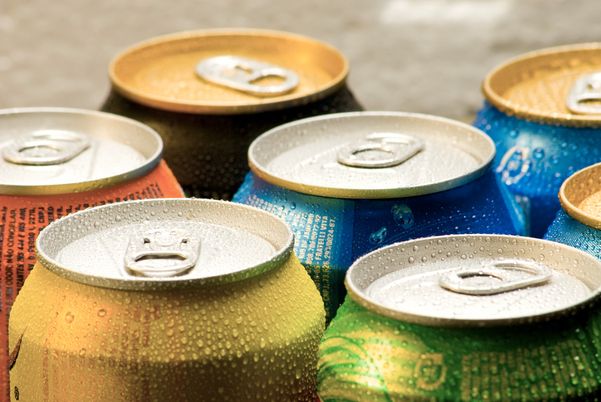Monster Beverage (MNST 0.14%) knows that its energy drinks are still under attack, and the second-largest player in this niche has had enough.
Shares of Monster opened sharply higher today despite the company posting disappointing financial results last night, and it could be the beverage speedster's tone that's fueling optimism on Wall Street today.
Shares of Monster have been under pressure since legislators and the FDA began investigating claims about its product's safety last year. Regulators were looking into a few claims that consuming Monster's adrenaline-boosting drink caused fatalities, but nothing has definitively linked the incidents to Monster itself.
Call for action
Monster kicked off its conference call by going on the offensive, and it didn't have a problem calling out Starbucks (SBUX +0.60%) and McDonald's (MCD 0.85%).
CEO Rodney Sacks wants to clear up some shoddy reporting that's been comparing a 5-ounce cup of coffee with 100 milligrams of caffeine to a 16-ounce can of Monster. For starters, reports suggesting that the energy drink contains 500 milligrams of caffeine are false. It's actually closer to 160 milligrams.
Sacks also points out that Starbucks doesn't sell a 5-ounce blast of coffee. There's an 8-ounce serving at the country's most prolific coffee house, but the Baron of Baristas' three prominent coffee servings are 12, 16, and 20 ounces. The midsize Grande serving is the default on the Starbucks website, and that packs 330 milligrams, or more than double the caffeine of a similar 16-ounce can of Monster.
Sacks didn't stop there.
Anticipating the counterargument that hot and bitter coffee drinks are sipped largely by adults, he offered up the fact that Starbucks and now McDonald's have broadly expanded their java offerings to include sweet and iced coffees.
"McDonald's, one of the largest restaurant chains in the U.S., has been remodeling their stores to provide coffee drinks -- both hot and cold -- in many flavors, varieties and efficacy," he argues.
Sacks also points out that any visit to a Starbucks or Caribou will see that adolescents are joining adults in sipping caffeine-rich premium coffee brews.
The real battle is against perception
Monster isn't trying to take down the Starbucks siren or Ronald McDonald. The maligned energy-drink maker just wants to make it clear that it's being wronged by the media.
Monster has sold 11 billion cans of energy drinks, including 2 billion this past year alone. Larger rival Red Bull is clearing far more than that. If energy drinks were dangerous, there would be more than just a handful of unfortunate cases that have yet to be definitively tied to the consumption of Monster's fizzy caffeine drinks.
The adrenaline booster is also making the bold step of following Red Bull in classifying its drink as conventional food. The previous categorization of Monster as a dietary supplement may have helped with relaxed labeling parameters, but now the push for greater transparency will find Monster drinks eligible to be sold without sales tax and qualify for food stamp purchases.
Monster's not afraid to roll up its sleeves. Will it pay off?
Moving on
Despite the negativity, sales still climbed 15% at Monster during the holiday quarter.
Things will hopefully improve once the attacks are far away in the rearview mirror, and not just for Monster, Red Bull, and the soda giants with smaller energy drink lines.
SodaStream (SODA +0.00%) has been quiet about marketing its energy drink option since the unfavorable press cast a dark cloud over the percolating beverage. Yes, SodaStream can make a fizzy energy drink -- at a ridiculously economical price point, to boot -- but it's been hard to promote that value component at a time when many are wary of the medium.
It also wouldn't be a surprise to find that Starbucks and McDonald's want this all to go away. They know that they rely heavily on marketing caffeine-rich beverages to consumers of all ages.
Monster's attack may help turn the tide, but that will ultimately be up to the FDA and consumers.








